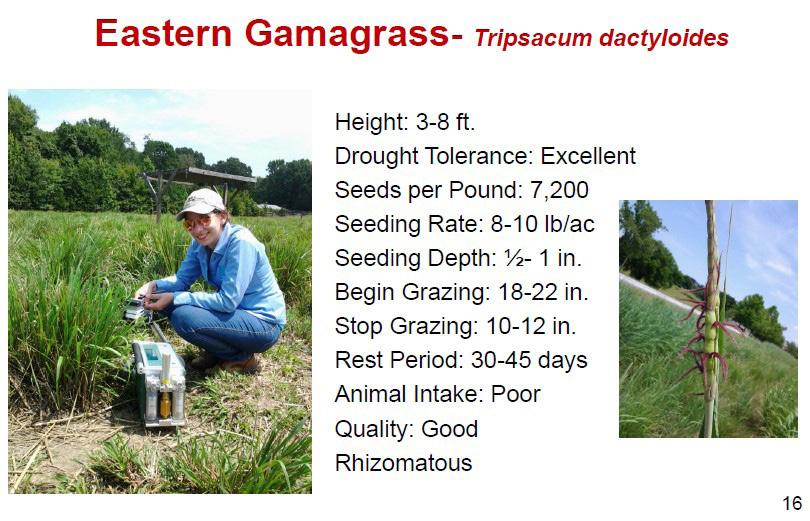
2 minute read
Forage Corner


Advertisement

Christine Gelley, Agriculture and Natural Resources Extension Educator, Noble County MANAGEMENT CONSIDERATIONS FOR WARM-SEASON PERENNIALS During my graduate program at In addition, warm-season perennial The University of Tennessee there was a grasses produce large amounts of dry matdefined interest in utilizing warm-season ter for animals to consume with little inperennial grasses as grazing pasture for puts. Fertilizer needs are low, water needs beef cattle. One of the greatest influences are low, there are few pests or pathogens for this interest is persistence during high that are threats, and they can withstand heat and drought tolerance. The same vast changes in weather. could be applied for Ohio. Some of the limitations of establishing Although our number of growing these grasses are lack of available imdegree days are fewer than producers have proved varieties for specific regions, slow in the South, we are still capable of incor- establishment rates, they mature quickly, porating warm-season perennials into our and they cannot tolerate close grazing. grazing systems. We also experience peri- Although animal intake is typically ods of high heat and drought. Our typical lower for these grasses than we see with sources of grazing pastures are cool-sea- our traditional options, animal intake son grasses (ex: tall fescue, orchardgrass, and weight gain can still be sufficient for ryegrass, timothy) and legumes (ex: white achieving production goals when managed clover, red clover, alfalfa), which are much for both the plant and animals’ success. less hardy than the grasses discussed here. Part of the reason is the way the plants photosynthesize (a.k.a. turn light into food), how they utilize water in the process, and differences in structural growth. Warm-season grasses are more efficient photosynthesizers, however the forage they produce in the process is of lesser nutritive value than cool-season grasses. The tradeoff can be worthwhile in times of stress, on marginal sites, remediation, and for wildlife enthusiasts. Forage of less than ideal nutritive value that is available is more valuable to grazing livestock than no forage at all. The greatest advantages of including warm-season perennials in a grazing system are the ability Not all species and varieties of to combat “summer-slump”-the time in warm-season perennial grasses are created mid-summer when our cool-season plants equal. Research available varieties suited tend to go dormant until cooler, wetter for your conditions, buy high quality seed, weather returns, drought tolerance when and start with good seedbed preparation. water is scarce, and the ability to extend One of the greatest struggles of managing the grazing season, which in turn means these grasses is weed control. Start clean feeding less hay. of weeds and stay clean to hasten establishment. Here are some of the details of the four most common warm-season perennial grasses:












